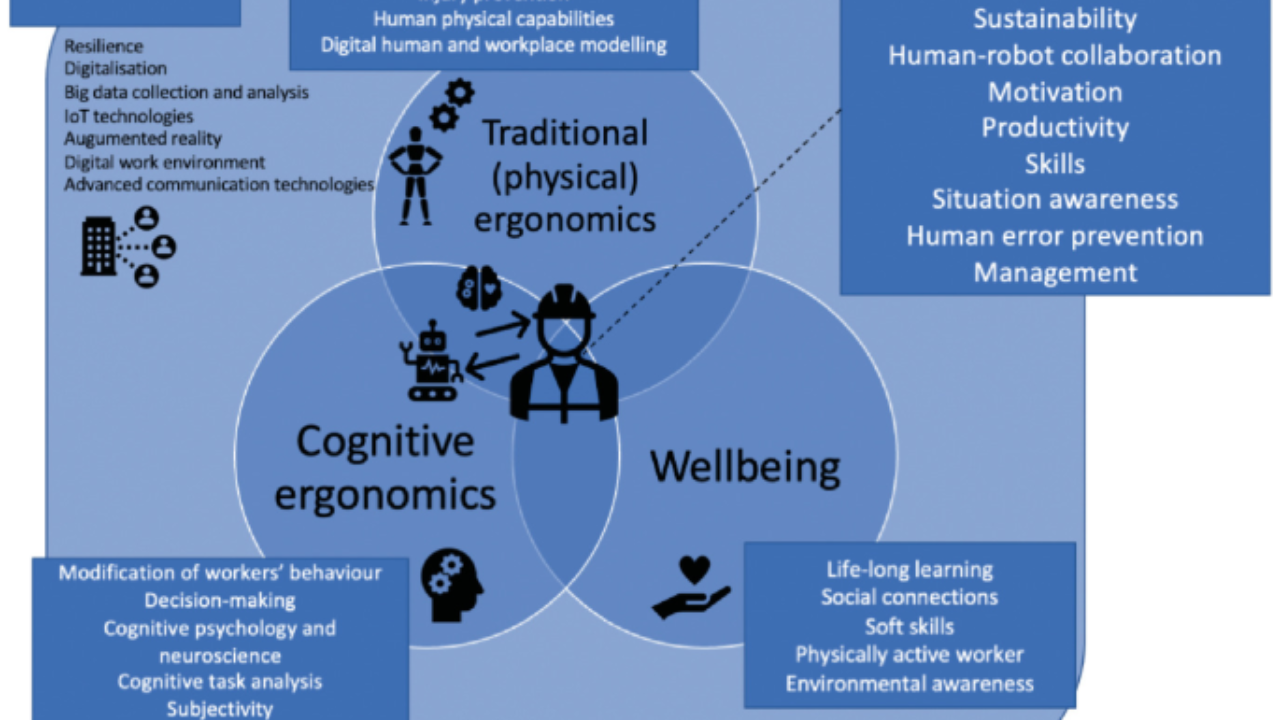
Introduction: A Regional Force with Global Impact
The Unión Latinoamericana de Ergonomía (ULAERGO) has emerged as a vital regional entity dedicated to advancing ergonomics across Latin America. Since its founding in 2004 and recognition by the International Ergonomics Association (IEA) in 2013, ULAERGO has forged its own identity—one shaped by the region’s unique socio-economic, cultural, and labor conditions.
But how does ULAERGO compare to other regional ergonomics bodies such as Federation of European Ergonomics Societies (FEES), Human Factors and Ergonomics Society (HFES) USA, Asian Ergonomics Design Society (AEDS), and Africa Ergonomics Society (AES)? This article offers a comparative analysis of their histories, structures, priorities, and regional influence.
Historical Origins: Different Roots, Shared Vision
| Region | Organization | Founded | Origin Context |
|---|---|---|---|
| Latin America | ULAERGO | 2004 | Grassroots collaboration of national societies |
| Europe | FEES | 2003 | Formal coordination of well-established societies |
| North America | HFES (USA) | 1957 | Post-WWII scientific focus on human factors |
| Asia | AEDS | 2001 | Response to rapid industrial growth |
| Africa | AES | 2010 | Emergent collaboration in response to labor needs |
ULAERGO is younger than HFES or FEES but older than AES. It emerged in a context where multiple national societies lacked a unifying framework—unlike FEES or HFES, which built upon pre-existing institutional stability.
Philosophical Approach and Identity
| Aspect | ULAERGO | FEES | HFES (USA) | AEDS | AES |
|---|---|---|---|---|---|
| Core Identity | Regional cultural integration | Institutional unification | Scientific rigor, technical focus | Industrial ergonomics and design | Socioeconomic ergonomics |
| Cultural Adaptation | High (ERGOLATINOMÍA) | Moderate | Low | Moderate | High |
| Grassroots Engagement | Strong | Moderate | Weak | Moderate | Strong |
| Inclusion of Informal Labor | Yes | No | No | Limited | Yes |
ULAERGO’s emphasis on ERGOLATINOMÍA—the integration of Latin American cultural, economic, and social realities into ergonomics—makes it stand out. While HFES remains highly academic and FEES heavily institutional, ULAERGO bridges professional science with on-the-ground labor realities.
Organizational Structures Compared
| Feature | ULAERGO | FEES | HFES (USA) | AEDS | AES |
|---|---|---|---|---|---|
| Member Base | National societies | National societies | Individual professionals | National and corporate members | National and research members |
| Governance | Regional council + committees | Rotating presidency, working groups | Board of directors + committees | Executive board | Continental council |
| Affiliation with IEA | Yes (recognized regional network) | Yes (recognized) | Founding IEA member | Yes | Yes |
| Congresses/Events | Biennial Latin American Congress | Annual European conferences | Annual HFES Meeting | Asian forums, local chapters | Intermittent pan-African meetings |
ULAERGO’s model closely resembles FEES in form, but it emphasizes horizontal collaboration, rotating leadership, and equitable participation from developing and underrepresented countries.
Strategic Priorities and Focus Areas
| Priority Area | ULAERGO | FEES | HFES (USA) | AEDS | AES |
|---|---|---|---|---|---|
| Occupational Health & Safety | High | High | High | Moderate | High |
| Informal Economy | High | Low | Low | Low | High |
| Training & Certification | Regional framework | National-level | National-level (USA) | National-level | Emerging efforts |
| Policy Advocacy | Growing influence | Moderate | High (USA-focused) | Low | Growing |
| Academic Research | Moderate, regionally contextual | High | Very high | Moderate | Moderate |
| Technology and AI | Emerging interest | Moderate | High | Moderate | Low |
ULAERGO focuses on local adaptability and inclusion, while HFES dominates in technological ergonomics. FEES operates at a more bureaucratic level with ties to EU policy.
Unique Contributions of ULAERGO
- ERGOLATINOMÍA: A culturally embedded framework adapting ergonomics to Latin American realities.
- Cross-national Certification: Standardized training models accepted in multiple countries.
- Informal Labor Ergonomics: Unique research and tools for non-regulated workplaces (e.g., street vendors, domestic workers).
- Multilingual Communication: Operating in Spanish and Portuguese ensures broader inclusivity.
These aspects are largely absent in North American and European models, making ULAERGO a globally significant case of contextualized ergonomics.
Overview Table: How ULAERGO Stands Out
| Category | ULAERGO | Other Regional Bodies (Average) |
|---|---|---|
| Founding Philosophy | Inclusion, cultural adaptation | Institutional coordination |
| Regional Challenges Addressed | Informal labor, underdevelopment | Industrial safety, technological design |
| Accessibility of Programs | Multilingual, low-cost, broad reach | High-cost, English-dominated |
| Recognition by IEA | Full recognition since 2013 | Recognized (varies by region) |
| Academic Orientation | Balanced with practice | Often academically dominant |
| Local Impact | High in labor policy and training | Moderate to high (limited to formal sectors) |
FAQs
1. What makes ULAERGO unique compared to HFES or FEES?
ULAERGO integrates local cultures, languages, and informal labor realities—making it highly context-sensitive and inclusive.
2. Does ULAERGO focus more on practice or research?
It balances both, but emphasizes practical application in marginalized and under-regulated sectors across Latin America.
3. Is ULAERGO influential globally?
Yes, especially after its 2013 recognition by the IEA, it now plays a crucial role in shaping regional ergonomics for the Global South.
Conclusion
While HFES leads in research, FEES in institutional design, and AEDS in industrial application, ULAERGO excels in people-centered, culturally informed, and inclusive ergonomics. Its recognition of informal economies, regional disparities, and multilingual realities offers a replicable model for other developing regions.

